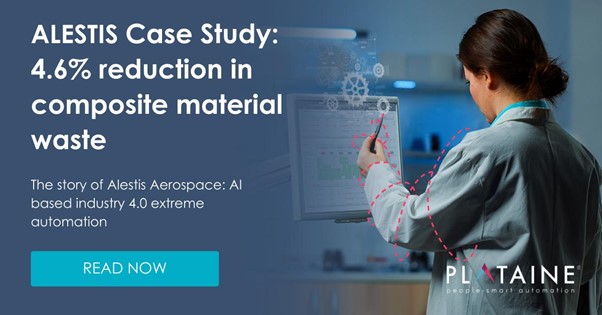Glossary
In today’s rapidly evolving manufacturing landscape, the Material Digital Passport (MDP) has emerged as a groundbreaking concept, revolutionizing how we approach product life cycles, supply chain management, and sustainability. This glossary page delves into the essence of Material Digital Passport, its challenges, the data it encompasses, reasons for its application, and guidance on where to start.
What is Material Digital Passport?
The Material Digital Passport is an innovative digital tool that encapsulates detailed information about materials used in manufacturing processes. It’s akin to a Digital Product Passport, where each product has a unique digital identity, providing transparency and traceability throughout its lifecycle. This passport serves as a critical component in supply chain collaboration, offering an extensive database of material origins, properties, processing methods, and end-of-life options.
Challenges
Implementing a Material Digital Passport comes with its set of challenges. Key among them are:
- Data Management and Security: Ensuring the accuracy, consistency, and security of the vast amount of data contained within these passports is paramount, as any discrepancy or breach could significantly impact the integrity of the entire supply chain.
- Integration with Existing Systems: Seamlessly integrating MDPs into existing manufacturing and supply chain systems is crucial, requiring careful planning and execution to avoid disruptions in current workflows and processes.
- Standardization: Developing industry-wide standards for data formats and interoperability between different MDP platforms is essential for ensuring that information is uniformly understood and utilized across various stakeholders, which is a complex task given the diversity of systems in use.
- Cost and Resource Implications: Balancing the initial investment in technology and training against the long-term benefits is a challenge, as organizations must allocate sufficient resources while managing expectations for return on investment, often in the face of budget constraints.
What Data Goes into the Digital Passport?
The Material Digital Passport, a key component in understanding a material’s lifecycle in manufacturing, incorporates a variety of essential data elements. It starts with information on the Material Origin and Composition, detailing the raw materials used, including specifics about their geographical origin and chemical composition. This is followed by Processing and Manufacturing Details, which provide insights into the methods employed in the material’s processing and manufacturing stages, as well as the environmental impacts associated with these processes. Additionally, the passport includes Usage and Performance Metrics, offering a deep dive into how the material performs in different applications and its overall efficiency and effectiveness. Finally, it encompasses End-of-Life Options, presenting vital information on the recyclability, reusability, and various disposal methods for the material. Collectively, this comprehensive data set in the Material Digital Passport plays a crucial role in enhancing transparency and sustainability in manufacturing practices.
4 Reasons to Apply Material Digital Passport
- Enhanced Supply Chain Transparency: MDPs provide unparalleled visibility into the material journey, fostering trust and collaboration among stakeholders.
- Improved Sustainability: By tracking materials’ environmental impact, MDPs facilitate eco-friendly practices and resource optimization.
- Regulatory Compliance: They help in adhering to increasingly stringent global regulations regarding material sourcing and environmental impact.
- Innovation and Market Competitiveness: Access to detailed material data drives innovation in product design and positions companies as leaders in sustainable manufacturing.
Where to Start?
To initiate the implementation of a Material Digital Passport (MDP) in your manufacturing process, a structured approach involving several critical steps is essential.
- The first step is to Assess Your Needs, which involves a thorough understanding of your business’s unique requirements and how an MDP can meet these needs effectively.
- Following this, it’s important to Build a Framework. This step entails developing a plan for the type of data you need to collect, taking into consideration various factors such as the types of materials you use, the complexity of your supply chain, and the usage of the end product.
- The third step is Technology Investment, where you allocate resources to acquire the necessary technology and platforms that are crucial for the creation and management of MDPs. Next is Training and Change Management, a critical phase where you educate your team about the significance and application of MDPs to ensure their smooth adoption and seamless integration into existing processes. Collaboration with Partners is another vital step, requiring you to work closely with suppliers, customers, and regulatory bodies to ensure that your MDPs are consistent and compliant with industry standards and regulations.
- Lastly, Continuous Improvement is key; this involves regularly reviewing and updating your MDP strategy to stay in sync with the evolving trends and regulations in the industry. This holistic approach ensures a successful and effective implementation of Material Digital Passports in your manufacturing process.
To conclude, The Material Digital Passport represents a significant step forward in the digital transformation of manufacturing. By providing detailed, accessible, and secure information about materials, MDPs enhance supply chain collaboration, promote sustainability, and drive innovation. Although challenges exist, the benefits of implementing a Material Digital Passport system are substantial and far-reaching, making it an essential tool for modern manufacturing entities aiming for efficiency, transparency, and environmental responsibility.
Learn more
Proactive Intelligence In Manufacturing






